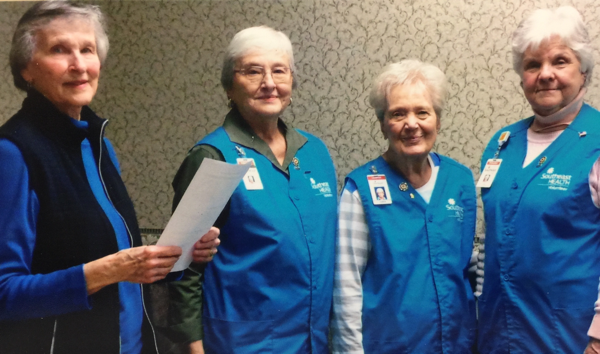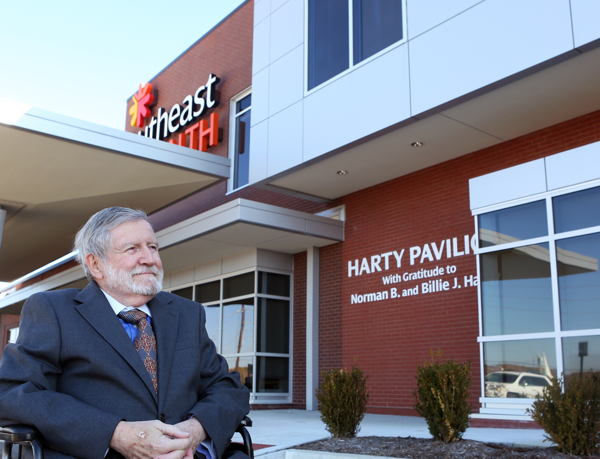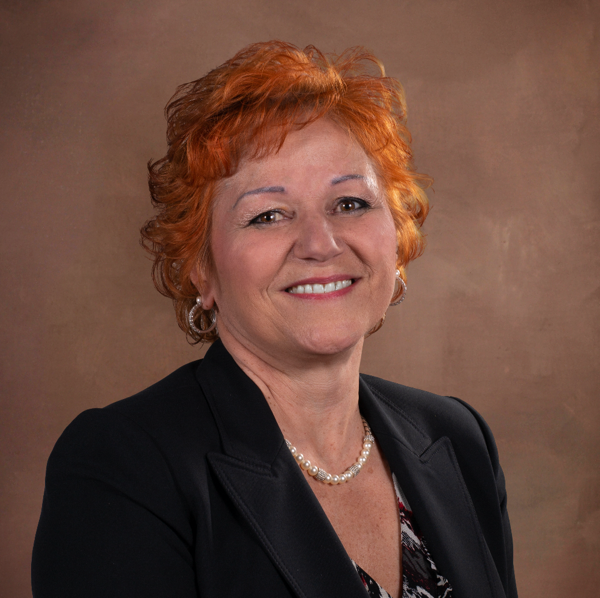Dexter, Missouri - Back in the 1960s, Dexter residents had a choice. But it was not the choice they wanted to make. The community had no hospital, and that meant traveling to Poplar Bluff or Sikeston for hospital-related healthcare needs.
John William Ringer and a small group of other Stoddard County leaders recognized the need for a local hospital and the strengths it would bring to their growing community. Ringer, then a young lawyer, was eager to help make the prospect of a community hospital a reality.
It took determination and the will to keep trying in the face of setbacks, Ringer recalls. A bond issue to build a county, tax-supported hospital was put before county voters in the late 1950s. That failed. Next, the group settled on the pursuit of a hospital district in the county.
The hospital district was a two-step process. First, a vote to form the district and next, elect a board of directors. The vote to form the district was heavily supported by the Dexter Jaycees, of which Ringer was President, and passed. However, during the second step, the opposition was successful in electing a majority of the Directors, who refused to levy the tax necessary to build a Hospital.
Ringer’s recollections of the tenuous beginning of the hospital are crystal clear, both the good and the challenges faced. Among those challenges was the election of opponents to the board of directors of the Hospital District, a move that halted progress.
Deterred, but Determined
Determined as ever, Ringer and other proponents for the hospital formed a new group, proceeding with steps to establish a non-profit hospital for the community. From there, the momentum grew and the project, and, at last, wheels began to turn.
Ringer was elected chairman of the new committee. He recalls that the late Frank Schneider, a Dexter businessman, had friends in West Plains, Mo., who worked with that city’s community hospital. Ringer, Schneider and others traveled to West Plains, returning home with ideas and how to get them done. In the fall of 1964, the local group formed a non-profit corporation with nine members. That eventually expanded to 15 members and included representative from the nearby towns of Bloomfield, Essex and Bernie. Ringer was among those elected to the original Board, a position he held until 2008, a total of 44 years, 25 0f which were as President of the Board.
Up next: site selection. The group had its eye on a location along One Mile Road, at that time a narrow, gravel road with nothing on either side but open fields. After many discussions, Ringer and his team were able to convince the property owners, the Rainey family, to sell a portion of the land for the good of the community.
Twelve acres were needed for the project. It fell to Ringer and another original incorporator, Marshall Vowels, to measure it out. “We took a tape measure and walked through weeds as high as our chests, but we got it done.”
Please Donate. They Did.
That same, “get it done” attitude propelled the project into a new phase – raising money that would be matched by a federal government program known as the Hill-Burton Act. A community fund drive was planned, including hiring a professional fundraiser who came with a hefty price tag of $25,000. “We were operating out of our hip pocket,” he says. “We didn’t have enough money to pay the fundraiser, so we went to people in the community and asked them to each loan us $100 in good faith. We raised the $25,000 for the consultant, and most of the people who gave us a loan forgave it.”
The community fund drive produced large donors – some as much as $25,000 – and also brought in a lot of small pledges. “In all, about 2500 people and businesses donated. We collected 95 percent of the pledges – the community was truly behind this project,” he says.
As with most construction projects, what seemed to be enough funding turned out to not be so. Hospital supporters once again returned to donors, asking them to add another year to their original three-year pledge. Most were happy to do so, he adds.
An architectural firm from Kansas City, experienced in hospital construction, was architect for the project, with the construction bid going to Dexter’s own Brown Construction Company. During construction, “I was at the site almost every day. I’d go by every morning on the way to the office. I was honored to lay the first ceremonial brick.” His dream was becoming a reality.
Vice President Keynotes Dedication Ceremony
By August of 1968, it was time to dedicate the new hospital, to be known as Dexter Memorial Hospital. Thanks to political ties within the community, Vice President Hubert Humphrey made a visit to Dexter for the dedication ceremony. Ringer laughs when he recalls that it was Humphrey’s visit that got the dirt road beside the hospital paved. “We had not planned on having the One Mile Road paved. But because the vice president was coming, it was done. He drove in on pavement, not dirt and gravel.” Missouri Governor Warren Hearnes was also present and offered congratulatory remarks.
A large, flatbed trailer belonging to Hart Truck line which was owned by Gordon Hart, another of the original Board of Directors, served as the make-shift stage for the dedication, and a large crowd enthusiastically greeted Humphrey. “I had the privilege of taking the vice president through the hospital,” Ringer says. “He saw the hospital as a great example of federal and local cooperation. I remember him telling us that this is where our tax money is well spent – hometown people taking care of hometown people.”
By the late 1990s, the hospital had exhausted its savings and the difficult decision was made to lease hospital operations to an outside entity to ensure its viability. “We saved the hospital. It operated under that structure until we entered into our current partnership with SoutheastHEALTH in Cape Girardeau.
Ringer says that despite the “failures we had under our belt, it never entered my mind that we would not succeed in giving Dexter a hospital.” Like most Dexter residents, Ringer is personally grateful for the hospital’s existence. “My son was born there, I underwent surgery there, and I’ve visited the ER a number of times.”
Ringer would demur if it was said that the hospital is his legacy. But it is his legacy, and it’s one that has made Dexter a stronger, more vibrant community.
https://showmetimes.com/Blogpost/vc06/Southeast-Health-Center-of-Stoddard-County-Marks-Milestone-Fifty-Years-and-Going-Strong






